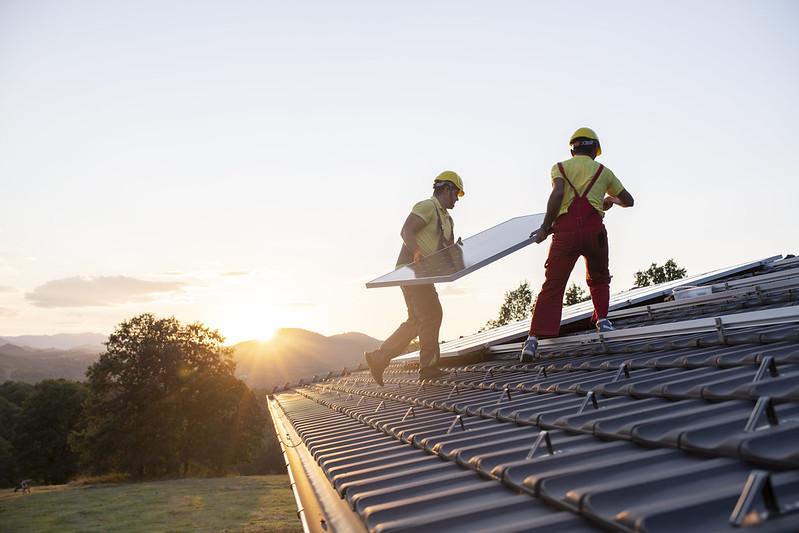Clean energy’s magnetism can bolster a shaky market

By Margret Nellissery, BRC-Canada Senior Analyst
Clean energy is an investment magnet whose pull should be boosted, not dampened, in moments — like this one — of economic turbulence.
Over the last five years, industries as diverse as technology, oil and gas, forestry, telecommunications, and food and beverages invested in 3,358 megawatts in power purchase agreements (PPAs) for clean energy in Alberta alone. This resulted in $6.4 billion investment, 6,200 jobs, and tax revenues to rural communities worth $54 million annually.
More recently, clean energy is attracting interest and investment from data centres and carbon dioxide removal developers, growing sectors certain to play important roles in our future economy.
Unfortunately, 2024 was a bit of a lost year for PPAs, with regulatory uncertainty resulting in only one new PPA announced. That uncertainty touched on everything from land use regulations to ongoing electric energy market restructuring and transmission policy changes.
The good news: A market resurgence is tantalizingly possible. And with the spectre of additional U.S. tariffs looming, an infusion of new investment dollars and its associated economic spinoffs would be very welcome indeed. For this reason, it’s important to understand how regulatory choices playing out in provinces across Canada could impact all of us.
Shovel-ready projects
Alberta sits at a pivotal turning point. It is bursting with potential. There are 2,701 megawatts (MW) of solar capacity and 579 MW of wind capacity ready for construction in Alberta. This data, shared in our recently released annual report, is from our analysis of the Alberta Electric System Operator's (AESO) long-term adequacy reports, which we have been monitoring to understand the number of projects ready for PPAs.
These projects have received approval for construction and are either under construction or awaiting commencement. As of November 2024, 3,280 MW of capacity remains available for PPAs for interested buyers.
But project developers often need the backing of a PPA to secure financing for their projects. And the current regulatory uncertainty — the reason behind the current limbo status — means that neither developers nor buyers can pin down essential details of those deals, including potential costs and profits. Policy changes currently reshaping the sector include land use regulations, energy market reforms and a transmission policy overhaul. Restrictive, potentially costly, or possibly both, these changes are still in flux. If the costs escalate to make projects unworkable in Alberta, developers and buyers will take their business elsewhere.
Clarity would allow businesses to make decisions. Fair and business-friendly regulatory decisions would trigger activity. And these projects could generate a lot of potential for economic growth in terms of capital investment, jobs, and tax revenues for municipalities in Alberta.
But a healthy PPA market requires more than just projects; it also needs active interest from renewable energy buyers. Are we seeing this interest?
Interested buyers
We know there is a backlog of interest. Despite 2024 being a slow year for PPA deals, BRC-Canada recruited more buyers than any other year since founding, with eight new buyers joining the community. This indicates rising interest and awareness for PPAs among buyers committed to meeting their sustainability goals.
We observed two industries, carbon dioxide removal and data centres, showing increased buyer interest. We also saw increased interest from organizations with smaller electricity demands and a growing appetite for PPA aggregation.
A glimpse of good news
Last month, 2025 gave us a taste of all that could be. Deep Sky, a carbon dioxide removal (CDR) company, signed a PPA with Low Carbon to fully power Deep Sky's first facility, Deep Sky Alpha in Innisfail, Alberta. It was proof that for CDR to truly work, it needs a renewable energy partner. And jurisdictions that enable that relationship will attract investment.
Then, Nova Scotia showed true leadership by announcing the results of its Green Choice Program, a subscription-based green tariff program allowing industrial energy buyers to purchase renewable energy easily. The buyers include public and private institutions and would receive power from six wind farms planned to come online by the end of 2028.
B.C. and Quebec have also recently pursued clean energy procurements and Ontario announced a technology-agnostic procurement open to clean energy developers. These provincial governments have all clearly stated they know clean energy is central to attracting businesses and will be key to a prosperous future economy.
With deals rolling in and anticipated policy clarifications in Alberta, we hope 2025 will be a stronger year for PPAs and renewable energy development. Because with that development comes the investment and jobs we need to make our economy more resilient to incoming shocks.
